In Italy, the number of users choosing to buy online continues to increase, especially in relation to certain specific sectors. This is the finding of the new “Ecommerce Italy” report by Casaleggio Associati. Also prominent among the figures are the growth in global revenue generated online-with a projection of about 6 trillion in 2023-and the use of the Internet by 5 billion people.
A positive picture, however, that needs to be seen against the light to delve into all the details.
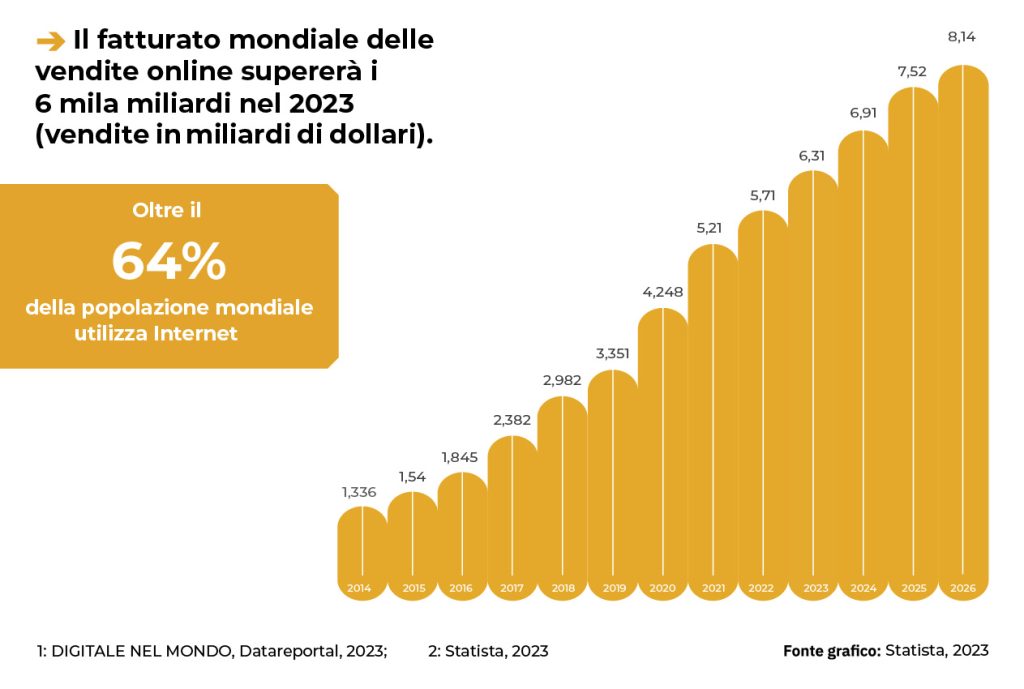
Fashion andelectronics stand out among the most purchased consumer goods online in 2022. However, these very two categories have been declining over the past year, unlike, on the other hand, food & beverage. This is the first post-lockdown year during which e-commerce platforms have had to come to terms with new shopping dynamics, after users were once again able to buy in physical stores and not mostly online (as during the pandemic period).
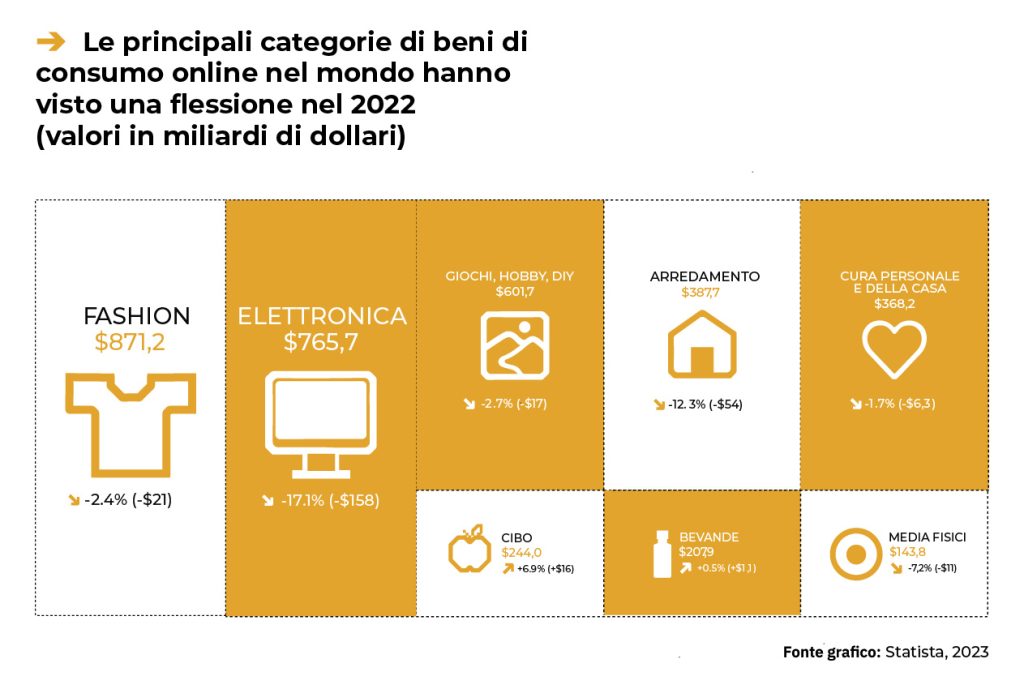
IN EUROPE 60% OF CITIZENS BUY ONLINE
How does Italy rank among the countries with the highest per capita spending on consumer goods? Exactly in XXI position (with $1,212).
However, after the boom in online sales during the lockdown, with growth of about 3-4 years in one, a gradual contraction in 2022 has been triggered-between the economic crisis, energy emergency, war in Ukraine, and consequent increase in the cost of transportation.
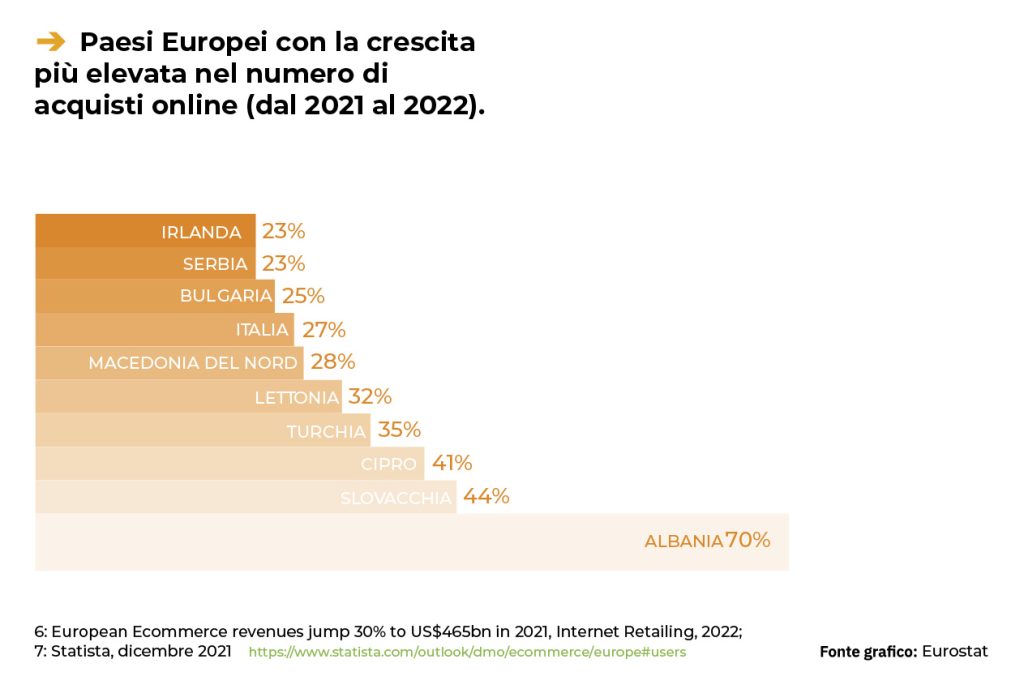
Italy ranks in the top ten among European nations with the greatest growth in the number of online purchases. Specifically, just in our country at the beginning of 2023, online penetration among the population slightly exceeded 75%, totaling 44 million unique users per month. Going into even more detail: more than 38 million Italians log on to ecommerce sites and apps every month.
ONLINE CUSTOMERS ARE ON THE RISE IN ITALY
But how is e-commerce turnover distributed in Italy? The largest slice concerns leisure: its turnover amounts to 50.07%, an incidence conditioned as much by online gaming as by purchases related to sports and hobbies. Leisure has been a very important sector for several years, followed by online malls (19 percent) and tourism (13.36 percent). Other areas not to be underestimated include food, insurance, consumer electronics, fashion, publishing, as well as health & beauty.
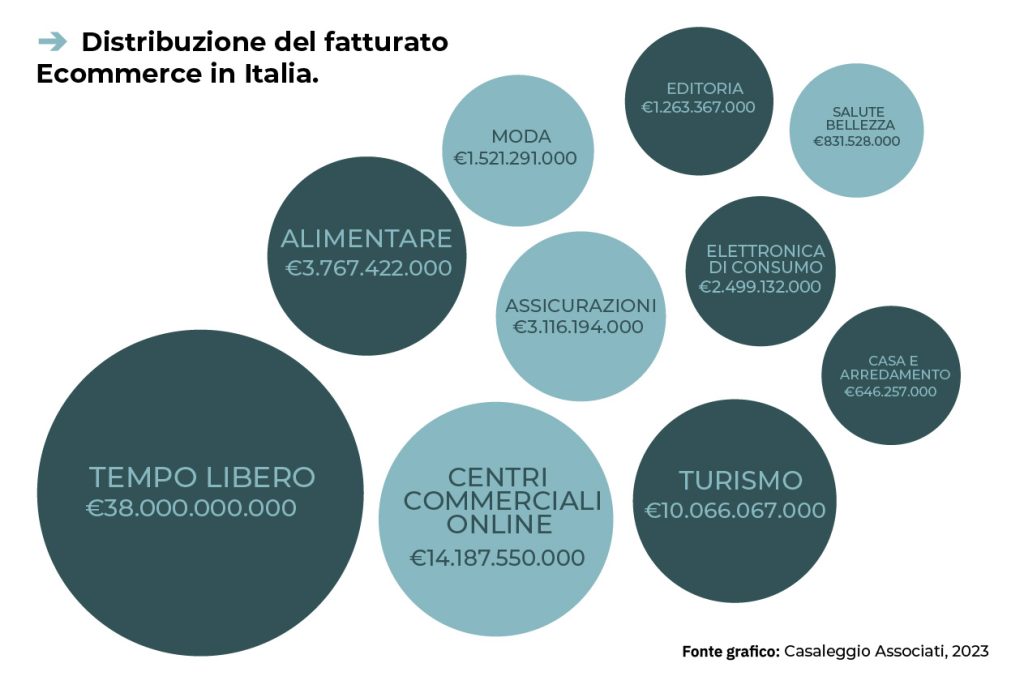
One detail that should not be underestimated concerns the connection between e-commerce platform, social media and marketplace, and the origin of online revenue. The highest percentage comes from the proprietary site (exactly 40 percent), while the second and third places are taken by marketplaces and social media (28 percent and 13 percent, respectively). Another 8 percent comes from mobile apps, a strategic asset especially for larger entities.
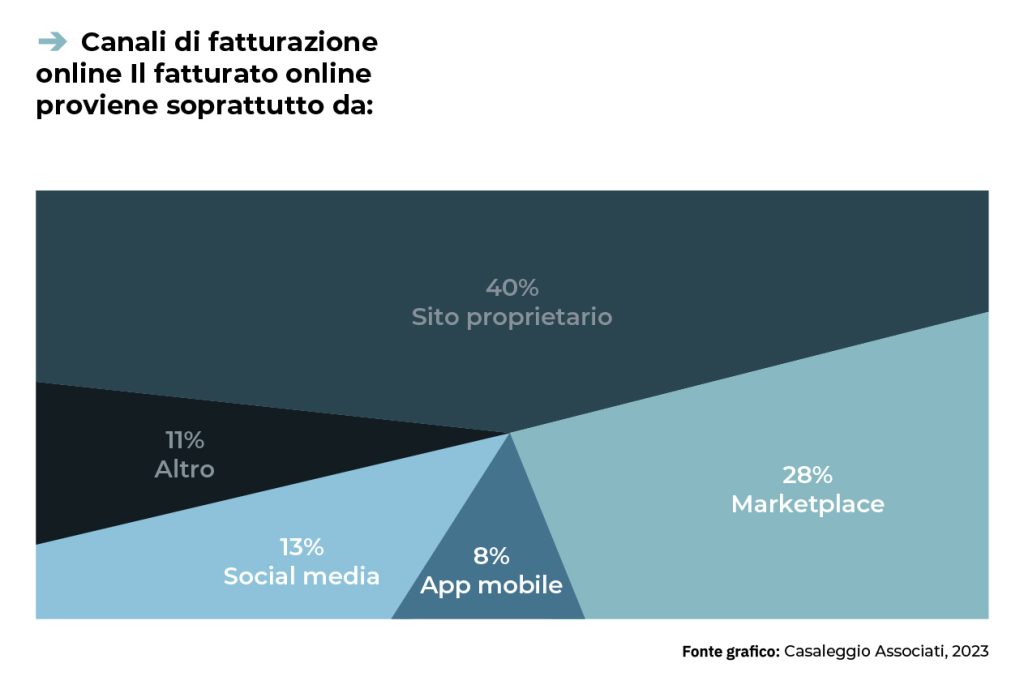
Over the years, the media used by different generations have changed, as has the digitization of processes. Then how can we fail to mention the evolution of regulations related to the way the systems are used. As a result, online marketing has had to adapt, changing and evolving at the same time, in a way that focuses not only on promoting both the product and the site, but also on a multichannel marketing and loyalty strategy. Of course, not all targets are the same, so different engagement tools need to be envisaged and planned for different targets. An example? The impact of Ads on social media: 16 to 24 years old is 28.4%, 25 to 34 years old 28.1%, 35 to 44 years old 27.2%, 45 to 54 years old 24.7%, and 55 to 64 years old 20.5%.
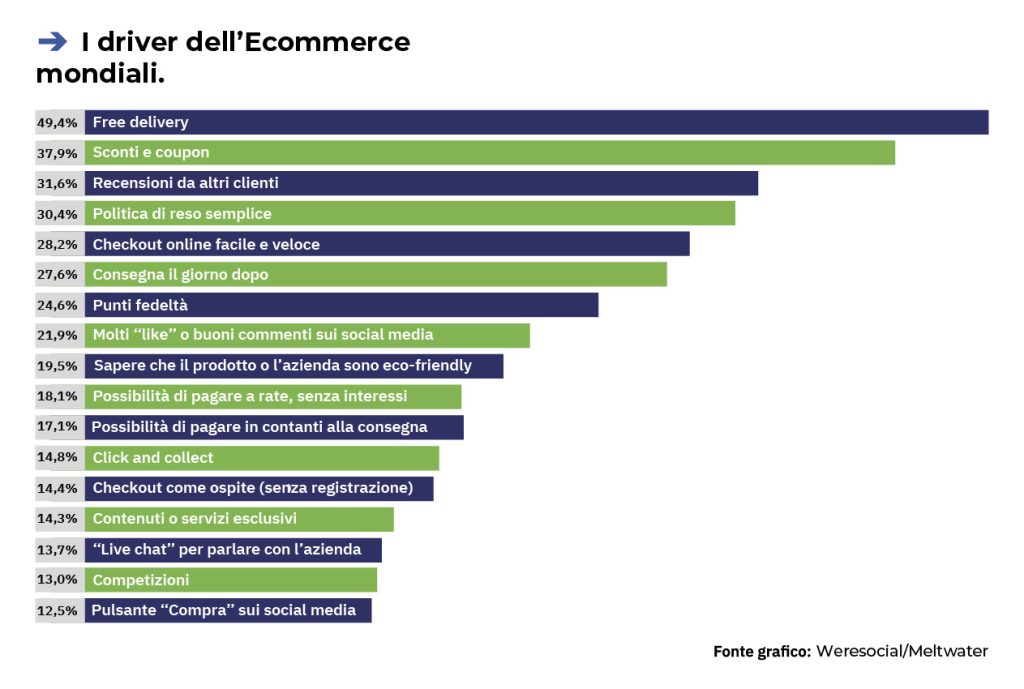
To increase their online presence, some e-commerce sites have begun to expand their range to contiguous industries so as to improve the rate of customer return. It should not be forgotten, however, that from the latest statistics, as noted in Casaleggio Associati’s report, continuous online promotion remains quite difficult, so much so that as many as 56 percent of the companies consulted find it difficult and say they are continuously experimenting.
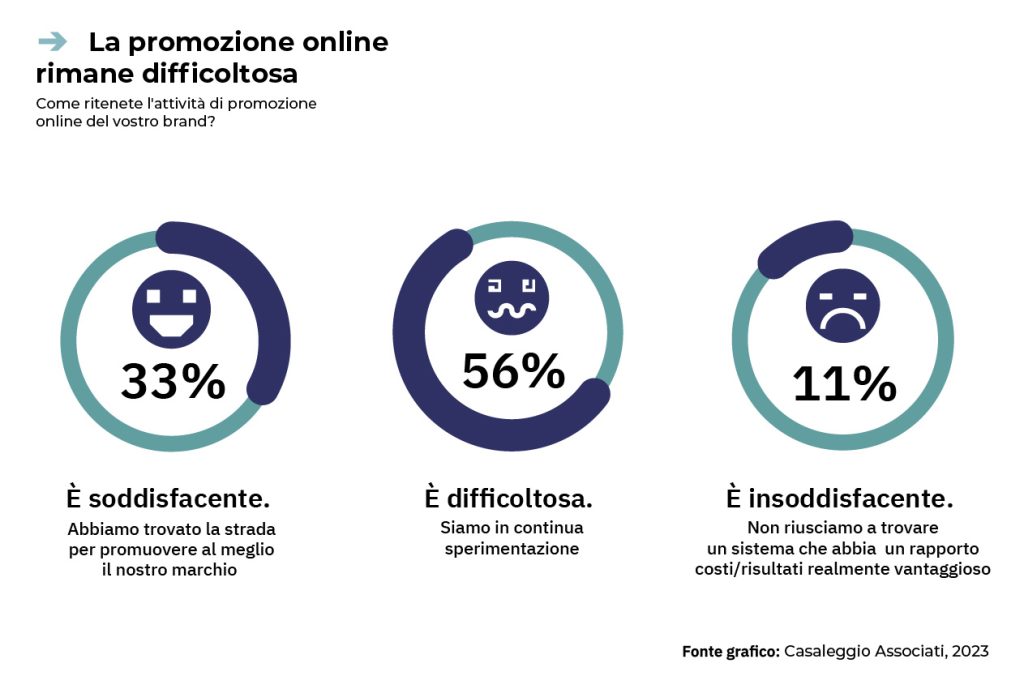
From advertising to SEO dynamics, from sales funnel optimization to the world of marketplaces, managing an online shop’s online presence has become increasingly complex, as Casaleggio Associati’s report also highlights. For this reason, new strategies related to online investment must be carefully planned and monitored from different perspectives.
That’s why it’s definitely helpful to rely on a vertically structured group and be in control of everything that happens through one partner. If you are also having difficulties or simply want to understand how to increase online sales and optimize your e-commerce platform all-around CONTACT US NOW , we will evaluate together the best channels and strategies to grow your site’s online sales, building customer loyalty and increasing conversion rates.